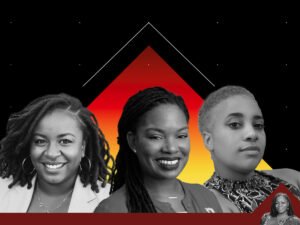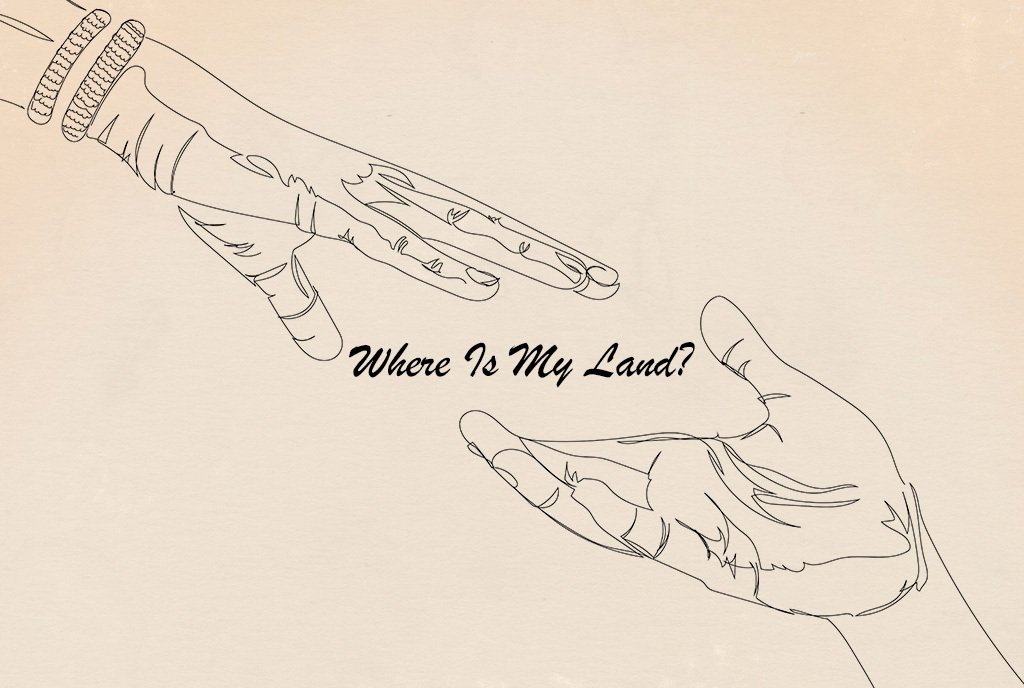
At a recent gathering of funders, during the announcement of “impact awards” for foundations whose targeted grantmaking addressed the conditions of vulnerable population groups, the MC listed a variety of categories that where those populations could be gathered: the poor, women and girls, people of color, the elderly, LGBT persons. Someone from the audience then shouted out, “the disabled,” which got a polite nod from the MC, who then continued speaking from her notes. Somehow, when it comes to the attention people with disabilities get from foundation grantmakers, the nation’s largest minority group, and the one to which any of us or those close to us might belong at some time during our lives, is often an afterthought.
At a joint program in Wilmington, Delaware, for the Council on Foundations and the National Governors Association, chair and Delaware governor Jack Markell ratcheted up several notches the potential role of foundations to promote and elevate this cause. As the NGA brief (downloadable here in PDF) outlines, his initiative, “A Better Bottom Line: Employing People With Disabilities,” has two major themes: creating a blueprint for businesses and states to increase employment of people with disabilities, and assisting governors with the implementation of employment campaigns in their states.
Governor Markell was joined during the meeting by Senator Tom Harkin (D-IA), the original sponsor of the Americans with Disabilities Act and the chair of the Senate Health, Education, Labor, and Pensions (HELP) Committee. Harkin has consistently drawn attention to the issue of employment among the disabled, a matter that has only grown in importance with the return of disabled veterans from Iraq and Afghanistan to a stateside labor market that is far from robust. Last year, a day after Governor Markell announced the NGA initiative, Harkin released a report through the HELP Committee titled, “Unfinished Business: Making Employment of People with Disabilities a National Priority.” Senator Harkin’s report noted that the employment conditions for disabled persons have gotten worse since the enactment of the ADA and have not recovered at the same rate as other groups as the nation comes out of the recession. Last year, in the Huffington Post, Harkin wrote:
“According to the Bureau of Labor Statistics, the disability workforce shrank by over 10 percent during the recession, five times faster than the non-disability workforce, which shrank by only about two percent…(A)s the rest of the workforce has slowly begun to recover [from the recession], the disability workforce has lagged. The number of working age Americans without disabilities participating in the labor force grew by almost 3 million in the past year. During the same period, the number of workers with disabilities declined by 94,000. Even at the high water mark for disability employment before the recession, only 37 percent of working age adults with disabilities were in the labor force.”
Employment for (not exploitation of) the disabled would seem to be an issue that everyone can get behind, but the statistics Harkin cites are hardly encouraging and do not show significant signs of reversal in the economic recovery. In fact, the latest employment statistics show an even greater decline: Unemployment among persons aged 16 to 64 with a disability in the labor force increased from 12.9 percent in May of 2012 to 13.6 percent in May of 2013, and unemployment among disabled women in the workforce surged from 13.9 to 16.8 percent. Because of low labor force participation rates and other factors, many observers consider those figures to grossly understate the real unemployment rates among those with disabilities.
Despite a distinguished history of fighting for advances for the disabled, Harkin and Markell have faced the reality that the ADA was not a panacea, and that the nation needs something more. Employment for the disabled is one of those issues that eludes a legislative cure. Even if more could be done through legislation, it is hard to imagine positive progress through this bitterly polarized U.S. Congress, despite the fact disability knows no party-label bias. Thus, Governor Markell and Senator Harkin have turned to the private sector for help: the business sector as the primary employers of the disabled, and foundations as institutions with resources and voices to put into the mix.
Highlighting successes in employing the disabled
Markell’s opening to the program highlighted the accomplishments of Walgreens, the drugstore chain, which has raised the proportion of people with disabilities in its workforce from zero to 10 percent in a mere five years, with an anticipated target of 20 percent. It was easy to see the internal calculations going on in the heads of a roomful of private sector employers; if Walgreens could make that sort of shift in its employment dynamic, why couldn’t they?
It was obvious as well to see the thought processes of the politicians in the room. As two Democrats, Harkin and Markell are often accompanied by a Republican with a commitment to disability employment issues. (Republican congressman Pete Sessions of Texas, for example, had participated earlier in a program with Harkin in Connecticut.) In this case, Harkin and Markell invited Oregon congresswoman Cathy McMorris Rodgers, who spoke about “employment first” initiatives in the private sector. What was clear was that employers listen to other employers, and Walgreens’ Randy Lewis had several riveted with the Walgreens story. (Markell pointed out that in some Walgreens distribution centers, the disabled proportion of Walgreen employees is closer to 50 or 60 percent, adding that, overall, disabled employees have statistically less turnover and absenteeism.)
Lewis observed that the challenge for employers is that they fear that somehow government won’t let businesses take the risk of experimenting with different approaches to hiring the disabled, but Walgreens simply went ahead and tried. “We made mistakes and learned from them,” and in the end, “we haven’t been punished.” Businesses don’t seem to learn by “going into the best practice store,” in Lewis’s words, because, after they go into that store, “I never see them come out.” Rather, in Markell’s words, “they don’t believe it’s true unless they hear it from another business.”
One might automatically think that there’s a public policy agenda to be pursued when it comes to a vulnerable population that is falling behind in the economy, and there are things to be done, for sure. Despite her Republican roots, McMorris Rodgers outlined a number of initiatives that government might pursue, including helping disabled persons qualify for available programs, facilitating the transition from school to work, and making federal agencies themselves more welcoming employers of the disabled.
Both Rep. McMorris Rodgers and Governor Markell were forthright in noting the importance of state and federal agencies themselves adopting policies and making accommodations for their own disabled employees, as opposed to simply browbeating private sector employers to do so. The governor called specifically for incentives for disabled people to start businesses as entrepreneurs, noting that “it’s not just a hobby to start a business,” and for better alignment of state and federal policies so that the disabled can maintain program benefits while getting a foothold in the labor force (“so that people don’t have to choose between needed benefits and having a job,” the governor said). One area of potential alignment, he noted, was the improvement in access to health benefits through the Affordable Care Act. In theory, this will reduce the need for a separate bureaucracy and set of hurdles for the disabled in getting subsidized health insurance.
Foundations’ affinities and beyond
Sign up for our free newsletters
Subscribe to NPQ's newsletters to have our top stories delivered directly to your inbox.
By signing up, you agree to our privacy policy and terms of use, and to receive messages from NPQ and our partners.
The term of art throughout the entire program was “public-private partnership,” and that is where the presence of several foundations and the co-sponsorship of the Council of Foundations enter the picture. On the opening panel, the key foundation spokesperson was Terry Mazany, the president and CEO of the Chicago Community Trust. In his presentation, Mazany said that foundations ought to lead by example, “reflecting and representing the full diversity of the communities we serve.” Speaking for the Community Trust, a community foundation, Mazany said that “we will not make grants to groups that are not committed to their diversity policies,” but the challenge to grantees also applies to the grantmakers themselves, to look at their board, staff, donor, and grantmaking diversity to ensure that the presence and needs of disabled persons are acknowledged and reflected.
Mazany expanded on his framework in a conversation with Nonprofit Quarterly. Foundation leadership, he said, has to see inclusion of people with disabilities as “a broad priority, crosscutting every programmatic initiative they support, not a standalone initiative that you can check off the box.” It starts with foundations “turning the mirror on themselves with their own policies and practices; that is what every foundation should be able to do.” The role of the Council in representing the foundation sector is part of the new vision for the Council on Foundations, playing a role as “thought leader” to network foundations around this and other issues.
Interestingly, he averred that there are both important roles for, and limitations to, “identity-based” affinity groups or clusters within the sector, that sometimes “they create their own siloes.” Rather than creating a dynamic that allows foundations to think that “we don’t fund in that area, [therefore] we don’t need to be there,” Mazany explained that “one of the functions of the [NGA/COF] summit is to make the case that inclusion of persons with disabilities covers all areas, not just a specific affinity group.”
From the affinity group side, the perspective is broadening as well. Kim Hutchinson, the president and CEO of the Disability Funders Network, agreed with Mazany about the need to “engage the field of philanthropy outside the disability field, looking at inclusive funding.” To Hutchinson, the numbers make the case. Twenty percent of the population is considered disabled, making it the nation’s largest “minority group.” Fifty-four million people are drawing Supplemental Security Income (SSI) or Social Security Disability Insurance (SSDI). The Disability Funders’ prior chairperson, Irfan Hasan of The New York Community Trust, explained that with more than 54 million Americans with disabilities, “if you’re not talking about disabilities, you’re leaving out a quarter of the population.”
Hutchinson advised foundations to “take what you’re doing and lay this disability lens on it.” She noted that foundation funding labeled as “disability funding” doubled last year, though like much of foundation grantmaking for vulnerable populations, a significant part is attributable to the Bill & Melinda Gates Foundation. Hutchinson asserted that Gates put $250 million into disability funding last year, though a significant portion of that went to their international work. Gates Foundation numbers tend to skew analysis of many “social justice” grantmaking variables. In the area of overall social justice funding, for example, the Foundation Center’s 2010 report indicated that Gates was the largest social justice grantmaker in 2008, awarding $1.16 billion in social justice grants that year, accounting for over 40 percent of all of the social justice grantmaking of the top 25 social justice funders. Once you factor Gates out of the picture, disability funding has been somewhat stable, though Hutchinson suggests that there are some organizations that do not self-identify as providing programs for the disabled. She also notes that the “huge increase in veterans funding” might indicate an increase in funding for disabled persons or for employment for the disabled.
A foundation trade association agenda
All that being said, it would be hard to find self-identified nonprofits in the disabled space suggesting that they are sanguine with the level of foundation funding they access. While the Council and some of its members helped underwrite the meeting, several of the foundations in the room, at least on the side of non-corporate foundation funders, were among the usual suspects. Donald Cooke of the Robert R. McCormick Foundation was visible and vocal, as was Elaine Katz of the Kessler Foundation. (Katz is also chair of the Disability Funders Network.) With Mazany playing a leadership role in the session and serving on the board of the Council on Foundations itself, his influence was notable, particularly in luring the John D. and Catherine T. MacArthur Foundation, based in Chicago like Mazany’s Community Trust, to participate as a cosponsor.
Nonetheless, absent were the other big foundations that one would have hoped to see in the room acknowledging the inclusive funding scenarios that Hutchinson outlined. Nonprofits in the room hinted off-the-record that they are often told at those foundations that they don’t “do disabilities,” notwithstanding Hasan’s contention that in doing education, employment training, and many other initiatives, foundations naturally intersect with the needs of disabled persons.
For Senator Tom Harkin, having foundations at the table was important. “The philanthropic sector has a significant role in focusing the attention of policymakers on solutions to social problems that are effective and tested,” Senator Harkin told Nonprofit Quarterly. “I look forward to working with key thought leaders in the foundation world to raise the profile of disability employment and education issues and identify solutions that will result in more Americans with disabilities participating in the workforce and joining the American middle class.”
How can foundations accomplish what Senator Harkin and, representing the National Governors Association, Governor Markell want to achieve? Part of the answer was inherent in the summit: a desire to use the foundations as generators of new ideas for what business and government can do in terms of employment initiatives for disabled persons. Markell suggested that thought leadership can and should be tied to foundations’ funding of pilot projects. Hutchinson raised one example, a program convened and hosted by the New York Community Trust on access to culture and the arts that either led to or accompanied the creation of a $3 million arts access fund. In the summit’s group brainstorming, the notion of foundation pilots driving larger scale change was actively endorsed. The brainstorming also called upon the foundations that participants didn’t see in the room—the “major foundations that fund poverty and civil rights, but none of those foundations at the table”—that should be told, “you fund poverty, you fund civil rights; you [should] fund disability.”
According to a senior Senate aide, political leaders like Senator Harkin and Governor Markell have a bully pulpit from which they can draw attention to the employment needs and challenges of the disabled, but foundations have a bully pulpit as well. Their resources and credibility can push the agenda for turning around the declining employment statistics for the disabled, perhaps by saying things that politicians and businesses think they can’t, and perhaps by communicating issues across political party lines. They see the impact foundations are having in pushing the agenda on veterans’ issues and perceive the possibility that the overlapping issue of employment for the disabled can also benefit from foundation attention and promotion.
People contacted by Nonprofit Quarterly attributed some of the Council’s engagement on this issue to Mazany as a Council board member, but also to Stephanie Powers, the Council’s Managing Director for Public-Philanthropic Partnerships. What the Council will do going forward, according to Powers, is to continue connecting individual foundations, along with regional associations, to policy makers like Markell who are trying to make headway on programs for increasing employment for the disabled (the NGA is scheduled to issue a more detailed blueprint for its initiative in August). Pragmatically, Powers describes the Council’s role—and philanthropy’s role in general—as geared to maintaining a long-term place at the table with decision-makers. “We’ve got a ways to go as a sector understanding where the value of diversity,” Powers explained. “It’s one of those drumbeat messages…building awareness that there is a role for foundations [although] it doesn’t mean you have to have a portfolio [in disability].”
Powers has a strong workforce development track record at the Council and put the issue of employment for the disabled into a broader context of persistent unemployment and growing wage and income stagnation. With a commitment to workforce issues in general, Powers will probably maintain a role at the Council networking with the NGA and ensuring that foundations have a place at the table with the governors in August. But there can be little question that, as with the efforts of foundations regarding the challenges facing veterans returning from Iraq and Afghanistan, vocal concern and bully pulpit pronouncements are fine, but they do much better with commitments of funding in support of public policy advocacy, organizing, and pilot/demonstration projects. Mazany is a powerful and committed champion of foundation funding for employment initiatives for disabled persons, but champions who can speak to the major poverty/employment/civil rights funders who don’t see themselves as connecting to the needs of 54 million disabled Americans must supplement Mazany’s work. Like too many foundation initiatives bemoaned by foundation leaders themselves, lip service won’t do the trick.
In his Huffington Post column from last year, Senator Harkin concluded, “During my lifetime, I have seen the workforce open up for women, older workers, minorities, and lesbian, gay, bisexual and transgender Americans. I believe our country’s ability to tap into the talent of its diverse population has spurred innovation and made us a global leader in so many areas. It is time to take the next step, to open wide the doors to the workplace for our citizens with disabilities.” With the impetus of Governor Markell’s NGA initiative, with Senator Harkin’s consistent push for employment for the disabled as a bipartisan issue, and with the foundation sector using its resources and credibility, maybe something positive will happen to reverse negative employment trends for the disabled. It won’t happen if foundations look at the largest minority group in the nation, with people from all races and ethnicities, and say, “we don’t ‘do’ disabled.” If they fund employment programs, civil rights, education, or social justice, they have to open their eyes and see that they can and should be adopting a lens for funding programs to employ disabled persons.
Correction: NPQ has adjusted the headline of this article from Is Philanthropy Sufficiently Proactive on the Issues of Disabled People? to Is Philanthropy Sufficiently Proactive on the Issues of People with Disabilities?












